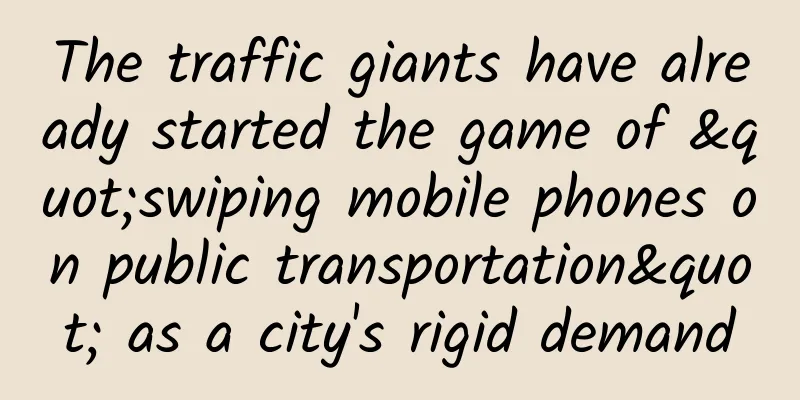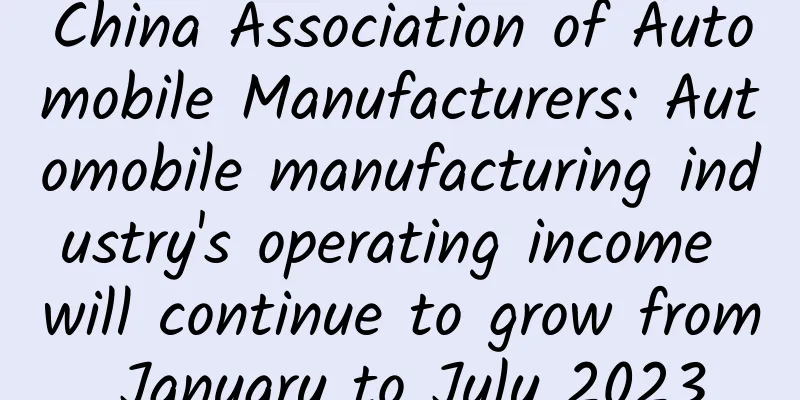The traffic giants have already started the game of "swiping mobile phones on public transportation" as a city's rigid demand

|
On June 26, Beijing Metro and Beijing Municipal Transportation Card launched the mobile phone swipe to ride project, and the first phase of the project was launched on the Fangshan Line. Currently, nearly 160 mobile phones can use the "Mobile Card" service, but Apple phones cannot be activated for the time being. This official announcement seems quite calm, but in fact, there have been successors who have been exploring solutions to transform the subway commuting experience. For example, as early as 2006, Nokia, the mobile phone giant at the time, launched an NFC mobile phone that supports Beijing Card. Mobile phone public transportation has been one of the selling points of mobile phone manufacturers a few years ago. However, mobile phone manufacturers initially took advantage of the operators. The three major operators, China Mobile, China Telecom and China Unicom, took advantage of their respective advantages and cooperated with local operators and local transportation card companies to realize mobile phone card swiping, and thus gave birth to Hebao, Yifu Pay and Wo Pay respectively. In terms of technical implementation, there are mainly two solutions: full card (RFID-SIM / RFID-UIM) and SWP (NFC-SIM). However, with the upgrade of the operator's network, both solutions have encountered bottlenecks to varying degrees, such as different card swiping performance, high cost of exclusive SIM cards, inconvenient recharge, etc., and have gradually been abandoned by users and mobile phone manufacturers. Why, after nearly 11 years, "public transportation card swiping", a high-frequency and rigid traffic entrance, has not set off the entire industry like "shared bicycles"? The attempts of the "pioneers" of operators have not been successful, so what innovative steps have the latecomers - urban transportation operators, UnionPay, which has a monopoly in the payment industry, and Internet companies such as Xiaomi and Alipay, taken? Operators of urban public transportation Urban public transportation is actually operated by the Urban Public Transportation and Subway Group, and is planned by local governments. Without government supervision, this "losing business" involving tens of millions of people will hardly survive for private companies. In order to facilitate the collection of transportation fees by various companies and integrate urban public transportation services, a unified transportation card company came into being. In addition, transportation cards also provide many convenient services such as convenience store consumption and park visits. Therefore, some cities even directly position "transportation cards" as a "citizen card" in order to better integrate municipal services. The first time the National One Card was proposed was in 2012, when the National City One Card Interconnection Project officially announced the first batch of cities to be opened. In fact, this standard was started by the Ministry of Housing and Urban-Rural Development as early as 2008, and it has supported 77 cities so far. However, if we go back to 2008, China was undergoing a major ministerial reform, in which one of the functions of urban transportation was transferred from the then Ministry of Construction to the Ministry of Transport. So in 2014, the Ministry of Transport issued the "Notice of the Ministry of Transport on Doing a Good Job in the Verification of the <Technical Specifications for Urban Public Transport IC Cards (Trial)>" to standardize the technical standards of the one-card system. It has gradually become the preferred access standard for cities and now supports more than 150 cities. The two sets of standards issued by different central ministries and commissions ultimately led to the mixed use of the "Ministry of Housing and Urban-Rural Development Standards" or "Ministry of Transport Standards" for public transportation in various cities in China, causing trouble for the interconnection of transportation cards across the country. Not only that, the two national ministries and commissions need to persuade the bus and subway groups in various cities to complete the gate transformation on the one hand, and unify the technical standards for issuing cards in various places on the other hand. The difficulty can be imagined. Urban transportation operators: limited innovation In terms of realizing the public transportation of mobile phones, the two directions facing the giants are also to transform the transportation card and the gate. At present, local transportation cards are becoming a part of citizens' lives. Therefore, if the "transportation card" is inserted into the mobile phone, it will not only cover all the consumption scenarios of the transportation card company, but also conform to the future development trend of the transportation card. It is only necessary to complete the system docking with the transportation card company, and it does not involve the transformation of the bus and subway companies. On the other hand, just like WeChat and Alipay bypass UnionPay, it can bypass the transportation card company and directly connect with the bus and subway company, and directly change the payment method of the bus and subway station by transforming the gate. However, the gate transformation not only needs to propose a new plan to ensure that the bus POS machine can be traded online under various network conditions on the road, but also needs to rely on a lot of tests to prove the launch. The manpower and financial resources involved during the period are difficult to estimate with accurate figures. Transform the transportation card or transform the gate? Faced with this part of the rigid demand of users, different giants have joined forces with bus and subway groups, transportation card companies, and national ministries and commissions, and used their own attitudes to find ways to break the deadlock. In Shenzhen, Shenzhentong, the operator of the transportation card, has launched a mobile platform called "Pengtao" to try to solve this problem. Shenzhen is the youngest city in China, and it is also the city that seeks the most progress and change. For Shenzhentong, the transportation card of Shenzhen, achieving Internet transformation, taking root in the local population of 11.91 million in Shenzhen, and opening up Shenzhen's travel-related services are its own mission, and do not need to be promoted by outsiders. Pengtao is an APP under Shenzhentong, which is independently operated by Shenzhentong E-commerce Co., Ltd. When you open this APP, you will find that in addition to providing basic Shenzhen public transportation card recharge (limited to NFC mobile phones), mobile bus card opening and other mobile bus services, it also provides a number of services including shopping malls and finance. When cooperating with mobile phone manufacturers, "Shenzhentong" is placed in the mobile phone through the form of air card issuance, and mobile phone manufacturers also provide corresponding entrances for users who have opened Shenzhentong to download the "Pengtao" APP. However, among the various services of Pengtao, the core function of Shenzhentong - card swiping is missing. Not all card companies have the same Internet thinking as Shenzhentong. For example, Shanghai Public Transport Card Company provides recharge services, which forces Android users who want to recharge through NFC on their phones to install its APP. However, the aesthetics of the entire APP remain in the Android 2.x era, and it does not provide small recharge options. You can only choose to recharge as low as 100 yuan, which is completely inflexible. The vision of "Xiaomi Public Transport", which is at the forefront of the industry , to use mobile phones to swipe the whole country, cannot be uninspired by mobile phone manufacturers. Although there is NFC-SIM in the front, for mobile phone manufacturers who value experience, the limitations of NFC-SIM are too obvious, which is not conducive to the unified experience of mobile phone card swiping. The idea of mobile phone manufacturers to realize mobile phone public transportation is to issue a new "transportation card" in the air above the mobile phone. Using the card simulation function of NFC, as long as the mobile phone is turned on, it can swipe the card at any time near the gate and enjoy all the local benefits of the transportation card. This is also the best experience of mobile phone public transportation at present. At the same time, various mobile phone manufacturers have gradually discovered that mobile phone public transportation based on NFC full terminal solutions can be packaged as a major selling point of mobile phones. But the difficulty lies in that if it is used as a selling point for mobile phones and the mobile phone is sold nationwide, users in various cities hope that their cities support mobile public transportation functions. However, there is no "national one-card pass". Such a pattern requires manufacturers and service providers to spend a lot of time and energy to negotiate business with the "transportation card" companies in various cities. Determine the product details and business model of each transportation card, and conduct complex and time-consuming joint debugging and road testing. But this service is actually a "predecessors plant trees, and future generations enjoy the shade" business. As long as the previous manufacturer and a transportation card company open up the business process, the card company can easily cooperate with the next manufacturer according to this template. Therefore, the transportation card cities of manufacturers overlap with each other. The current leading mobile bus manufacturer is Xiaomi. Since Xiaomi 3 supported Shanghai Transportation Card in 2015, it has officially opened 7 transportation cards online. Two of the 3 transportation cards under internal testing support the standards of the Ministry of Transport. Following closely behind are Huawei and Samsung, which have 6 and 2 transportation cards respectively. At the Xiaomi 6 launch conference, Xiaomi announced that it supports transportation cards in 10 regions. At present, "transportation card" companies will charge a certain "service fee" based on the operating costs of cooperating with mobile phone manufacturers, and different manufacturers have different practices. For example, Xiaomi uses subsidies to encourage users to open cards. Other manufacturers, such as Huawei and Samsung, have not launched relevant subsidy plans because they are not active in promoting this business. The competition among manufacturers for transportation cards is still spreading in actual experience. In order to improve the experience, Huawei independently developed inSE technology, but because the technology is still in its early stages, some models can only open one transportation card; Xiaomi uses the latest NXP chip, which requires more adaptation work, but can accommodate more transportation cards and bank cards. The characteristics of the implementation principle of mobile phone manufacturers also make transportation card migration possible. Xiaomi has announced at the Xiaomi 6 launch conference that it will promote the migration of transportation cards between mobile phones. This function has been launched in Shenzhentong and is in the process of communicating with more cities. Huawei also announced plans to support this function at the forum. It is believed that in the near future, it will become a reality for transportation cards to be migrated to different mobile phones with mobile phone accounts. This wave of mobile bus trends led by Xiaomi has gradually swept the entire mobile phone industry. Samsung launched the bus card business in Shanghai and Beijing last year. Meizu, which has recently been complained for not launching bus services, has also started internal testing. OnePlus also announced at the just-concluded press conference that it will support multi-city transportation cards. Although, the current iPhone does not support the Beijing subway. But in fact, a few months ago, Apple also secretly changed the privacy policy of Apple Pay, perhaps suggesting that Apple public transportation will soon debut in another form. The emergence of mobile public transportation has brought the arrival of the "National One Card" one step closer. UnionPay's attack UnionPay relies on two different solutions for public transportation: "ODA" and "UnionPay Cloud QuickPass". The difference between the two is that ODA is based on the London Underground model and is specially designed to support public transportation and subways. It supports offline transactions and can write data to the card, thereby supporting time-sharing and segmented pricing; while "UnionPay Cloud QuickPass" requires an Internet connection for transactions. If data is not written to the card, it only supports a single ticket system. The embarrassing thing at present is that the ODA solution only supports UnionPay IC cards. UnionPay is connecting with mobile phone manufacturers to the ODA solution, but no mobile phone manufacturers have yet supported it; "UnionPay Cloud QuickPass" supports mobile Pay services such as Apple Pay, Mi Pay, Huawei Pay, Samsung Pay, etc. But I believe that those who have paid attention to public transportation news have been flooded with a piece of news in April this year. That is, Guangzhou Metro supports the use of Apple Pay to swipe cards, and on June 2 this year, Guangzhou Metro also announced that it would be the first in the country to support ODA on all network gates. However, in fact, there is no connection between the two. At present, all mobile phone manufacturers' Pay only supports the APM line with a single ticket system of 2 yuan. Behind the APM line, the "UnionPay Cloud QuickPass" technology is used. Not ODA. In addition to the Guangzhou APM line, "UnionPay Cloud QuickPass" also appeared on Hangzhou buses on May 23. What is more embarrassing is that since the bus gates were renovated at the same time, the buses that support "UnionPay Cloud QuickPass" also support Alipay. Buses that support "UnionPay Cloud QuickPass" are currently included in the UnionPay ODA plan of Beijing and Shanghai Metro. However, it is the top priority of the ODA project to push mobile phone manufacturers to support ODA as soon as possible, but due to the competition with the manufacturers' own mobile bus solutions, I believe that the negotiations will not be very smooth. UnionPay has directly connected with local bus and subway groups to renovate gates, which has actually left out the "transportation card". Although UnionPay has launched a related subsidized travel discount campaign, if it is not possible to establish the same preferential regulations as the "transportation card" in the future, it may only be suitable for passengers who do not take public transportation for a long time. Alipay and Didi: Eat the last piece of the travel traffic cake . In Alipay, there is not only the entrance to Didi Taxi, but also the entrance to "Zhima Credit" and "Shared Bikes". Public transportation has become the last piece of the puzzle in its travel layout. Alipay launched the "Future Public Transportation" plan in 2014, hoping to join hands with the Ministry of Housing and Urban-Rural Development and mobile phone manufacturers with NFC functions to promote mobile card swiping in 35 cities only by transforming transportation cards, but it ended in failure. Since 2017, Alipay has turned to QR code for public transportation, which is currently divided into two modes: electronic public transportation card (Hangzhou, Wuhan) and Alipay ride code. At present, Hangzhou public transportation can use Alipay to scan the code to get on the bus . The electronic public transportation card is a compromise solution: it still relies on a virtual transportation card, and users need to recharge. In Hangzhou, Alipay did not directly cooperate with Hangzhou Public Transportation to launch a monthly ticket, but instead pulled in Hangzhou Citizen Card Company for a three-party cooperation and opened up the real-name authentication behind each card, laying the groundwork for providing more Hangzhou municipal services. Wuhan is slightly different. Alipay chose to cooperate directly with Wuhan Public Transport Group to launch Wuhan electronic public transport card service. Wuhantong was not involved. The card enjoys 20% discount like the public transport card. It is expected that all bus gates in Wuhan will be renovated in mid-August. By then, you will be able to enjoy the bus transfer discount. According to the Wuhan Public Transport Group, more than 300,000 people have received Wuhan electronic public transport cards. However, Alipay still insists on retaining the bus code model in Hangzhou and Wuhan. This is the real model innovation. Users with a Sesame Credit score of 550 can "get on the bus first and buy the ticket later" (that is, pay after riding). Although the fare is full price. But promoting this model is Alipay's real intention-a bus code is swiped all over the country. At present, Alipay is also testing the waters in other cities. By renovating individual bus routes in each city, optimizing the experience in the early stage, so as to cooperate on a large scale after the plan is determined. Currently, it also supports Jinan, Huzhou, Shaoxing, Nanjing, Tianjin, Zhumadian, Jinhua, Suzhou, Wenzhou, Qingdao, etc. For Alipay, it is not easy to eat this hardest piece of travel cake. Among them, the transformation of Alipay's bus gates requires a lot of time, money and government public relations. Even if the transformation is completed, calling out the QR code and scanning it on a shaking bus is not the best experience. So for Didi, which has already occupied the leading position in the travel industry, is it possible to enter the market? After Didi connected to the "ofo shared bicycles", the travel business finally only had public transportation left. At present, the only project Didi is promoting in the public transportation field is "real-time public transportation". There is also a Didi minibus pilot on the North Fifth Ring Road in Beijing. I believe that after Didi collects enough data in the future, it will enter the public transportation field in another form. "One mobile phone to swipe across the country" within three years? Halfway through 2017, the business models of various giants in urban public transportation have officially surfaced. With the entry of Internet giants such as Apple and Alipay, the competition has started in full swing, and the originally slow-developing mobile public transportation soup has suddenly become boiling. Due to the particularity of the public transportation industry, unlike the previous outcome of the entry of Internet giants and the exit of old companies, this time it will be more confusing. Can local transportation card companies continue to maintain their monopoly in the local area? Can Xiaomi Public Transportation, the current leader of mobile phone manufacturers, continue to lead the industry in the face of Apple's entry? Can UnionPay occupy a place in it? Where will the operators go? Only time can give the answer. Since Alipay and WeChat launched QR code mobile payment in 2014, it has only been three years since one mobile phone has become a reality to buy all over the country. Now, Beijing Metro has also started its mobile public transportation plan. I believe that in the future, local transportation companies that are more anxious than the giants will become the driving force in this transformation, maybe in less than three years? As a winner of Toutiao's Qingyun Plan and Baijiahao's Bai+ Plan, the 2019 Baidu Digital Author of the Year, the Baijiahao's Most Popular Author in the Technology Field, the 2019 Sogou Technology and Culture Author, and the 2021 Baijiahao Quarterly Influential Creator, he has won many awards, including the 2013 Sohu Best Industry Media Person, the 2015 China New Media Entrepreneurship Competition Beijing Third Place, the 2015 Guangmang Experience Award, the 2015 China New Media Entrepreneurship Competition Finals Third Place, and the 2018 Baidu Dynamic Annual Powerful Celebrity. |
>>: Dianca raises 2 billion yuan, round A financing has started, and will launch a high-end brand
Recommend
World Toilet Day丨Today is a big day with a savory taste!
Going to the toilet It's never a small matter...
How to promote bidding? Just read this article!
As a newbie in bidding, you may have this questio...
How do you operate when you don’t have any support?
All operations students will encounter this probl...
Qiuqiu's 7-day traffic explosion attack and defense strategy (Issue 1-2)
This course can help you solve the problems of ins...
The first release of 2019! How can a brand leverage promotion opportunities to achieve its goals?
Festivals have always been a time for brands to r...
Analyze how to place information flow ads in the automotive industry from 3 perspectives
"Golden September and Silver October" i...
Can eating "cold rice" help you lose weight? What you need to know about resistant starch
I heard that cooling down cooked rice, steamed bu...
What changes will occur in your body if you eat and drink heavy-tasting food for a long time?
The pace of life is fast nowadays, and many peopl...
APP cold start skills and strategies
Cold start is an important beginning in the entir...
Heavy rainfall hits the south again today! How to prevent floods and avoid risks scientifically?
Today, heavy rainfall in the south hit again. The...
Mystery of the century: Why is the face the worst skin on the whole body?
Have you ever had the same confusion: I have spen...
The 2016 first half of the year App Comprehensive Strength Ranking (the most beautiful on the entire network) Are you on the list today?
I examine myself three times a day: Have you comp...
In the midst of the "chip shortage" craze, when will domestic mobile processors be able to truly catch up?
In the past six months, "chip shortage"...
With 200 million in revenue, how did Himalaya FM Knowledge Carnival operate?
Ximalaya FM, which was launched in 2013, is an on...
There is a kind of battery that can keep your mobile phone powered for 100 years
Produced by: Science Popularization China Author:...









